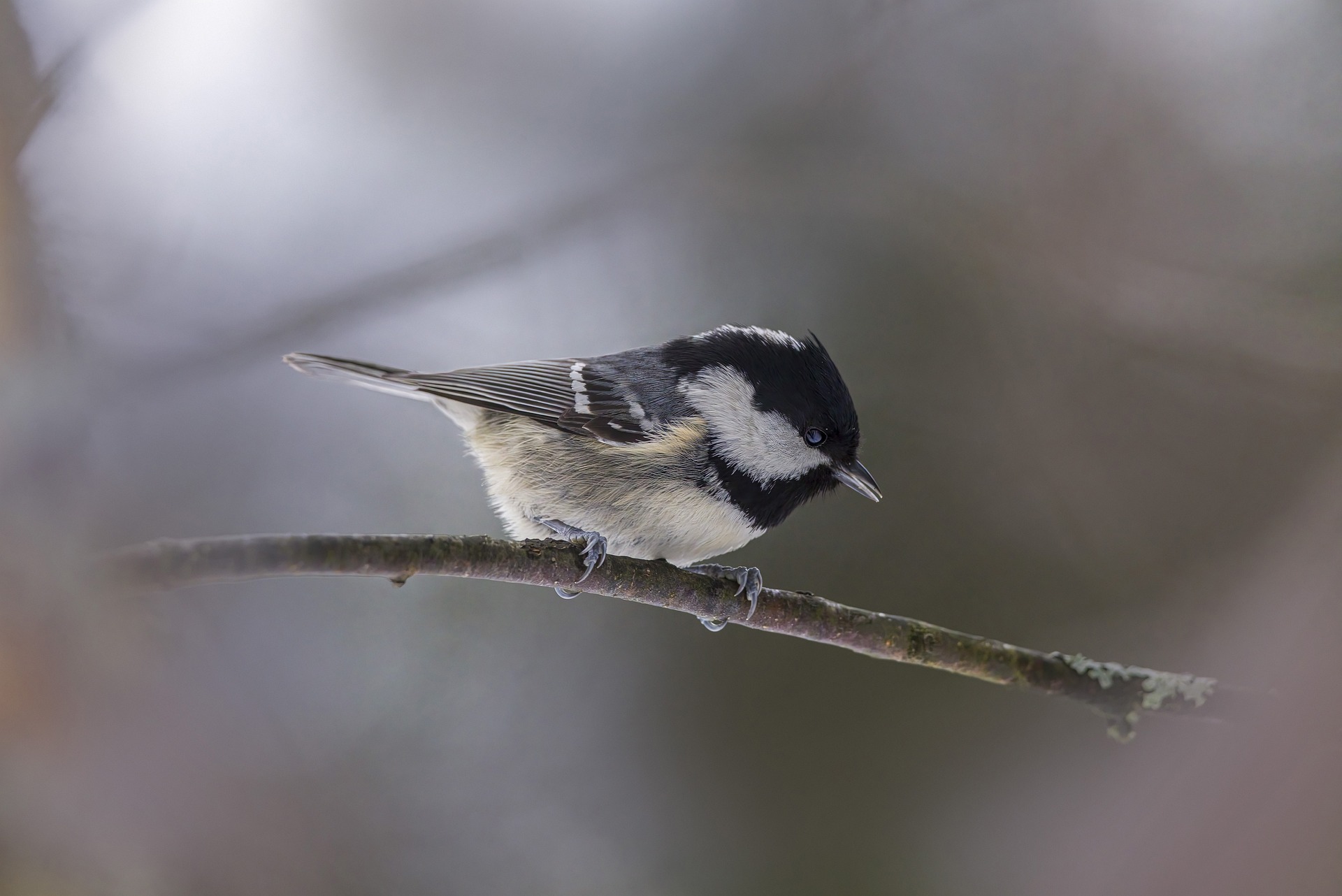The coal tit (Periparus ater) is a small passerine bird belonging to the family Paridae, which also includes tits, chickadees, and titmice. Here’s some information about the coal tit:
Appearance: Coal tits are small birds, measuring around 10 to 11.5 centimeters (4 to 4.5 inches) in length, with a wingspan of approximately 17 to 20 centimeters (6.7 to 7.9 inches). They have a distinctive appearance with a black cap on their head, white cheeks, and a black bib-like patch on their throat and upper chest. Their back is a warm brown color, while their underparts are pale yellow. They also have a characteristic white stripe down each wing.
Habitat: Coal tits are found in a variety of woodland habitats, including deciduous and coniferous forests, as well as parks and gardens with suitable trees and shrubs. They prefer areas with dense vegetation where they can forage for food and find suitable nesting sites.
Distribution: Coal tits are native to Europe and parts of Asia, including the UK, where they are a common and widespread resident bird species. They can also be found in some parts of North Africa.
Diet: Coal tits are primarily insectivorous, feeding on a variety of insects, spiders, and other invertebrates, especially during the breeding season. They also eat seeds and nuts, and they may visit bird feeders, particularly in winter when food is scarce.
Behavior: Coal tits are active and agile birds, often seen hopping among branches and foliage in search of food. They use their sharp bills to probe into crevices and under bark to find insects and larvae. They are also known to cache food, hiding seeds and other items in crevices or among vegetation for later consumption.
Breeding: Coal tits typically nest in tree cavities, old woodpecker holes, or nest boxes, lining the nest with moss, feathers, and other soft materials. The female lays a clutch of around 6 to 10 eggs, which she incubates for about two weeks. Both parents are involved in feeding and caring for the young, which fledge after about two to three weeks.
Conservation: Coal tits are not considered globally threatened, and they are widespread and relatively common throughout their range. However, like many bird species, they may face threats such as habitat loss, fragmentation, and climate change. Conservation efforts aimed at preserving and restoring woodland habitats can benefit coal tit populations and other bird species that depend on these habitats for their survival.
The coal tit is a charming and resourceful bird species that plays an important role in forest ecosystems as a predator of insects and a seed disperser. Its distinctive appearance and lively behavior make it a favorite among birdwatchers and nature enthusiasts.
Views: 29
Subscribe to the newsletter:
